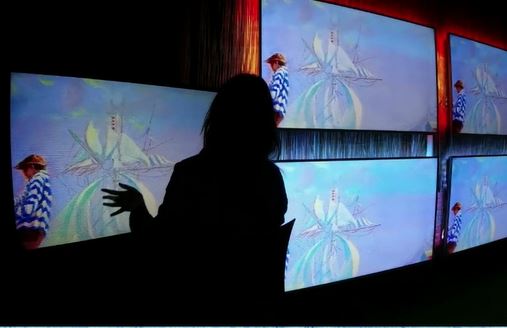

https://www.madsgallery.art/item/8246cc4a-0321-4235-af3e-832c26fdfaf6/artist/zamuel-hube
See all the artists, works, brochure and cataloque!
https://www.instagram.com/m.a.d.s.artgallery/
Concept by Art Curator Martina Viesti
“I prefer to paint the eyes of men than cathedrals, because in the eyes of men there is something that is not in cathedrals, however majestic and imposing they are.” (Vincent Van Gogh)
The psychology of art, from its beginnings, has investigated the correlation between identity and art. In order to carry out a satisfactory analysis, it is appropriate to consider what the birth of individuality actually is. Some historians have noted how the formation of the modern world accompanied the affirmation of individualism. The crisis of the Middle Ages and the formation of new social classes leads to the possibility of a detachment of people from conformity, and the tangible proof of this detachment is represented by the self- portrait. Initially, the artists inserted their own figure among the crowds of people who painted, then, little by little, we arrived at the first self-portrait, dating back to that of the painter Jean Fouquet (Tours, 1420-1471 / 81?). Thus begins a slow but unstoppable process of the formation of modernity, in which the collective consciousness begins to fragment, divide, and decompose; and from this moment the artist’s individuality and the awareness he has of himself begins to emerge. According to Stefano Ferrari, professor of psychology of art at the University of Bologna, the real problem lies in the fact that our identity often does not coincide with our image, but it is necessary that this identity be represented and presented to the world through the image. Art itself is individuality and self-affirmation, although it is born within styles and currents, the artistic act is individual in itself, it is a question of self-realization. There were two artists who marked the history of the twentieth century, on the one hand the surrealist Salvador Dalì and on the other the emblem of PopArt Andy Warhol, the first immediately sensed the great potential and the enormous importance that they were beginning to have the mass media and that to achieve success it was essential to use and exploit them. With Dalì the representation of the artist as a star was born, his dandy attitude and his eccentric behavior began to attract extreme attention. With Dalì, therefore, there is a union between artist and public figure, the birth of the artistic icon, an idol and, therefore, a high level of attention is paid to one’s appearance and representation towards the outside. Warhol, on the other hand, was an individual constantly tormented and dissatisfied with his appearance, he perceived a constant sense of inadequacy and yearned for social acceptance. With the spread of the mass media, so the boundary between artist and individual is blurred, the two figures merge and the artist’s own personality becomes a reason for admiration and idealization. Self-portrait, self-representation, the perception of oneself and one’s identity are absolutely topical and pre-eminent themes in the society of the 21st century, Social Media and the daily stage have allowed a widening of the boundaries between private life and life publishes, between the background and the stage, to return to Erving Goffman’s sociological theory. The roles of individuals merge, just like Dali and Warhol, one is no longer one thing or the other, depending on the circumstances, but one is everything, one is the essence of oneself and one wants to demonstrate it in any way and through any tool. In this new world, dominated by communications, a sense of pride relative to what one is is born, there are no longer hiding places or places in which to hide one’s identity and one’s essence, but on the contrary, real individual revolutions are triggered in which you become aware of your existence and celebrate it, returning to be at the center and protagonists of your life. The collective consciousness and its identity are completely overshadowed, and with it the social characteristics that have, up to that moment, defined the roles of individuals. This new reality brings with it a sense of individual freedom, in which people are fully aware of who they are and their potential, it is the individual who reigns supreme. Sociologists speak of Second Modernity, a reality in which the transformations begun in the first modernity are brought to completion: a modernity in which the liberating thrust was held back by the presence of other entities, such as social class, family of origin, work . It is in the second modernity that this liberating drive finds its maximum expression, there is an intensification of the individualization process. In fact, the first modernity had subjected them to the limits imposed by tradition and society, the second modernity freed them from all the institutionalized models that shaped their existence. This new modernity carries with it the principle that people should make themselves the center of their projects and build themselves as their own masterpiece. On this concept, that of Self-culture, a new cultural sensitivity, characterized by the important value attributed to the autonomy and self-management of every lifestyle, M.A.D.S. Art Gallery, wants to invite artists to express their essence, unhinged from what the market wants and requires, from what the generalized artistic taste craves. M.A.D.S. Art Gallery therefore asks artists to express their sense of self, to self-determine themselves as creators, rising above all boundaries, be it stylistic or technical, following a single word “dare”.









